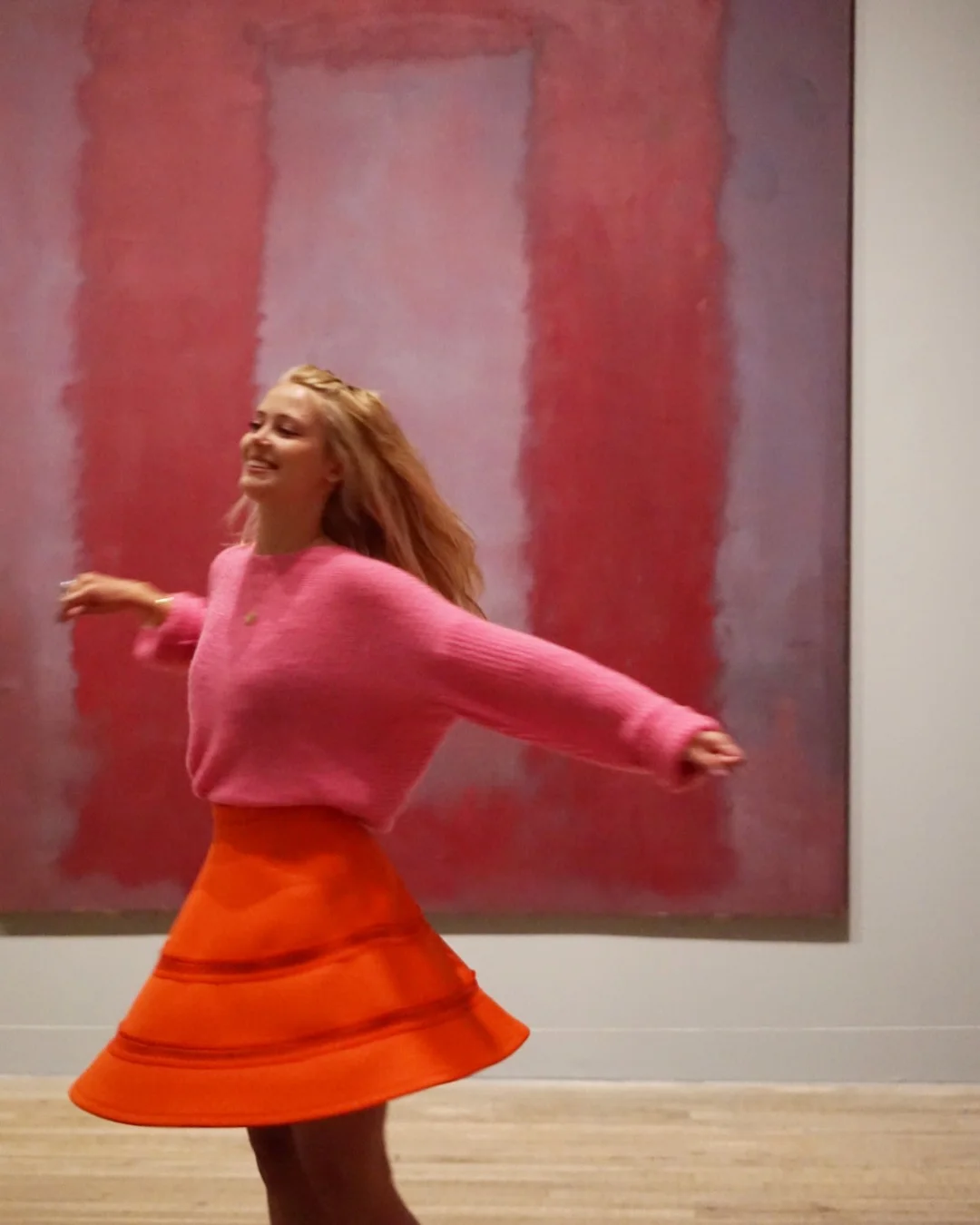Working in an Auction House with Adela Smejkal
Adela Smejkal is a Client Liaison at Sotheby’s Bids Office in London and travels frequently to work auctions happening around the world. Since she is surrounded by amazing art all the time, she created an Instagram page which documents auctions she attends, and combines fashion with her love for art. Check out @as_artjournal to she her posts.
Interview between Ty Bishop and Adela Smejkal. Originally published in Volume 6.
TB: You’re based in London, but frequently travel through your job at Sotheby’s. Can you talk about what you do?
AS: Have you ever seen a live auction, even if only in a movie? Do you remember the guy with the hammer, two or three other persons on his left-hand side and a row of people on the phones rising their hands every minute? Well, that pretty much sums up my department. Except the auction is the best and most exciting part of my job description. Working in Sotheby’s Bids Department also involves a lot of work behind the scene. We are there to accommodate our clients’ requests, queries and mostly bids they wish to place on their desired pieces of art, furniture, jewels, watches, wine and sometimes even books or manuscripts. However, we also cooperate with Sotheby’s specialist departments according to the sale happening. The job also involves traveling as Sotheby’s London is the only European branch to have proper Bids Office. Therefore, when there is a bigger sale happening in another city, our department is required to travel there to conduct the auction.
TB: What does a typical week look like?
AS: Each week is a bit different because everything depends on what and how many auctions are scheduled for that particular week. My job can get extremely busy and stressful or very slow and uneventful. The craziest week I’ve had so far was when we had three auctions in one day and more auctions the following days. There was basically no time to breathe. Other times it might be only one sale a week and you get to have some time to walk around Sotheby’s galleries to see the works going into sale in person. You can get clients that scream at you on the phone or you can meet interesting people during the sale. When we have an evening sale we work until late hours, other times we might finish early and that’s when I leave the office and go to discover the rest of London’s art life.
TB: What’s your favorite part of the role?
AS: I would say it’s when I am clerking next to the auctioneer during an important sale and a big lot comes up. You get to be part of the bidding game and it’s like watching a tennis match sometimes. My other favorite thing is the having incredible works of art in front of your eyes all the time.
TB: You get to see a different aspect of the art world than most people do. Some people see art as a form of financial investment while others look at the cultural value it brings. You seem to straddle both of these worlds. Can you talk about about both sides and the importance of both?
AS: I think art is a very sensitive subject to define. Nothing is black and white. In my view, an artwork with a certain historical and cultural value naturally has a monetary value too, it’s a sign that the work is exceptional and precious. Of course, it is not a rule. Many artworks, especially in contemporary art, are reaching enormous prices and it makes you wonder why is it worth so much compared to an old master painting for instance. That’s because today’s art market is driven a lot by trends and brand names. It’s like fashion. However, sometimes it gets too crazy and unreasonable. I personally first appreciate the artistic value and focus on what I feel when I see the work and then I discuss the financial value. Otherwise, if you do it the other way around it can significantly influence your view. People purchase art for various reasons and I agree that art can be a great investment but if you are an art collector and lover you never look only on the monetary value.
TB: You run an Instagram page as an art journal. It’s creative way of sharing the great art you regularly encounter, and often there’s a bit of fashion and art history tidbit’s thrown in. What’s your vision for the Instagram and why did you start it?
AS: After one of my trips to an art fair, I realized I had so many pictures and nowhere to share them. I didn’t want to spam my private Instagram with art pictures as I know that not many of my friends actually appreciate art. That’s when I created my ‘art journal’. After some time I started posing in front of art just to give an idea about the size of an artwork or simply because I thought my jacket matches or something like that. I’d receive a very positive response to those pictures and I started to think more about staging and curating my pictures. I think this way I make art more accessible. I attract people that would look at fashion but not art but this way they might say ‘oh look what to cool painting as a background for that dress’. I also think that fashion is a form of art. Not of course everyday clothes that everyone wears but I’ve just started communicating with young talented designers or fashion design students and my aim is to start curating pictures with their design in front of works of art.
TB: How engaging is looking at art through a platform like Instagram? Do you think it’s a good or bad thing for art?
AS: It is definitely a good thing but is not the same as seeing art in person, that is for sure. Instagram enables you to see and explore art without going anywhere, which is amazing for two reasons; great shows and exhibitions are all over the world and thanks to Instagram you can see it too if you are on the other side of the world.
Second, it also enables people like me to discover talented, young and unknown artists who we normally might not be able to spot. For them, it is sometimes the only form of exposure.
TB: From your experience, how would you describe the art world?
AS: The art world can’t be described in one way. Even though some forms of art are tangible the art world itself isn’t because there are no rules, art is not science. Today’s art world is very diverse and not easy to walk in. For both sides, the artists and the art professionals. To understand it and live in it, you have to be passionate about it and willing to learn something new every day.

